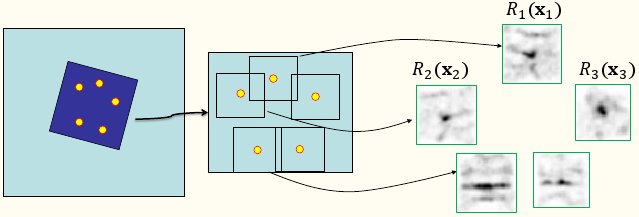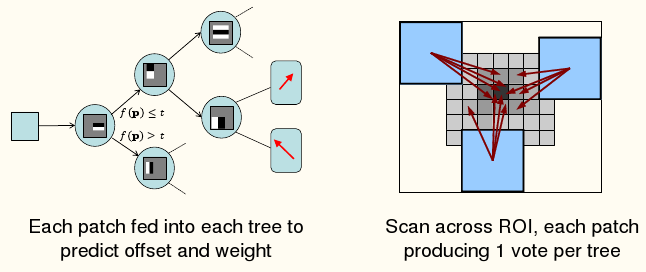
Fig.1 Sampling into the reference frame, then applying local models to compute response images R(x)
The best fit is found by finding the shape and pose parameters to minimise:

The term "Constrained Local Model" originally referred to a particular type of model, in which the response images were generated by applying normalised correlation with a local patch, where the model patches are modified to fit the current face but constrained by a global texture model [1,2].
However, the term has come to mean any method in which a set of local models are used to generate response images, then a shape model is used to search for the best combined response - thus earlier work by Cristinacce would also come under this revised definition [3,4].
Example from BioID, using models trained on AFLW:

[1] D. Cristinacce and T.F.Cootes, "Feature Detection and Tracking with Constrained Local Models", Proc. British Machine Vision Conference, Vol. 3, pp.929-938, 2006 (PDF)
[2] D.Cristinacce and T.F.Cootes, "Automatic Feature Localisation with Constrained Local Models", Pattern Recognition Vol.41, No.10, pp.3054-3067
[3] D.Cristinacce and T.F.Cootes, "A comparison of shape constrained facial feature detectors", Proc. Int.Conf on Face and Gesture Recognition, 2004, pp.375-380. (PDF)
[4] D. Cristinacce and T.F. Cootes, "Facial Feature Detection and Tracking with Automatic Template Selection", Proc. 7th IEEE International Conference on Automatic Face and Gesture Recognition 2006, pp. 429-434. (PDF)
[5] J.M.Saragih and S.Lucey and J.F.Cohn, "Deformable Model Fitting by Regularized Mean-Shifts", International Journal of Computer Vision, pp.200-215, 2011.
[6] T.F.Cootes, M.Ionita, C.Lindner and P.Sauer, "Robust and Accurate Shape Model Fitting using Random Forest Regression Voting", ECCV 2012 (PDF)
[7] C.Lindner, P.A.Bromiley, M.C.Ionita and T.F. Cootes,"Robust and Accurate Shape Model Matching using Random Forest Regression-Voting", IEEE Trans. PAMI, Vol.37, No.9, pp.1862-1874, 2015 (here)
[8] C. Lindner, S. Thiagarajah, J.M.Wilkinson, The arcOGEN Consortium, G.A. Wallis and T.F.Cootes, "Fully Automatic Segmentation of the Proximal Femur Using Random Forest Regression Voting",IEEE Trans. Medical Imaging, Vol. 32, No. 8, pages 1462-1472, 2013. (doi) , 2013